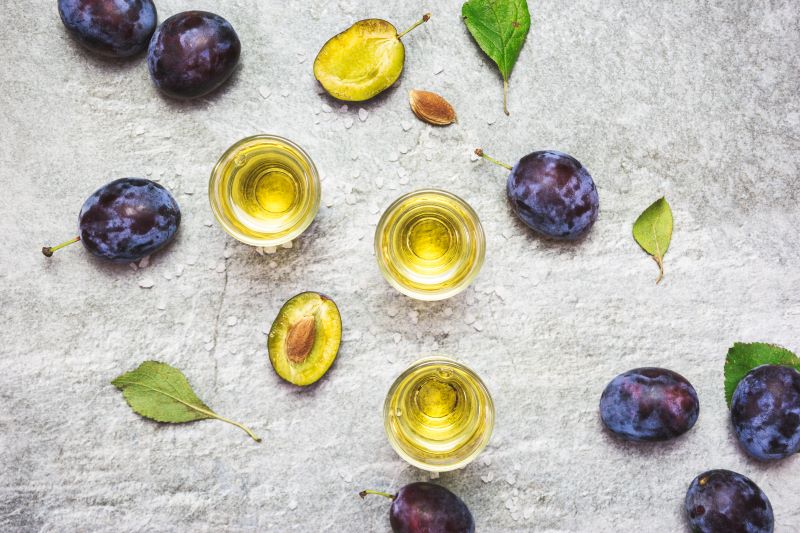Fermentation is an outstanding process for developing safe and natural products with unique flavours.
Among fruit fermentations, wine is the most widely consumed alcoholic beverage and has been the focus of much research and development from Lallemand Oenology.

Thanks to our expertise in the microbiology and fermentation of wines, to the fine characterisation of our yeasts’ metabolism, and to our in-depth understanding of their fermentative behaviour and their sensory contributions, we have also acquired the knowledge to support the producers of wines from other fruits than grapes and fermented fruit alcohols.
Given the diverse composition of the different fruits to be fermented and the specific fermentation conditions, there is no general recipe, but rather an optimisation of each fermentation process for the different fruits to get the best out of the raw material before obtaining the desired fruit alcohol. The quality of the fruit alcohol obtained after distillation of the fermented wine depends to a large extent on the successful completion of the fermentation process, which relies on the proper yeast choice and the proper management of their rehydration and nutrition.
With our extensive range of selected active dry yeasts and our yeast derivatives to carry out the fruit fermentation process and achieve alcohol by distillation, we provide reliable concepts and natural solutions for alcohol producers and in fine for the beverage markets.
A good, healthy and strong yeast inoculum is required to achieve good fermentation kinetics, optimum flavour results and high ethanol levels.
Yeast rehydration with our GO-FERM℗ solutions is a key step for optimal fermentation performance and commercial success.
The rehydration phase has two main functions:
- Rehydration of the cytoplasmic membrane and uptake of bioavailable yeast growth and survival factors. The yeast membrane regulates the flow between the juice/mash/wort and the interior of the cell for the biochemical reactions.
- Rehydration of intracellular components to achieve efficient biochemical synthesis and recovery of characteristic abilities of the selected yeast strain.
Choice of yeast strain of Saccharomyces cerevisiae among our portfolio is a key decision for distillers, brewers and winemakers, as different strains are known to perform differently under various fermentation conditions and produce different aromas and flavours.
Traditionally, Saccharomyces cerevisiae has been used for fermentation. In addition to the classical yeast selections, recent developments in yeast breeding research also offer a new range of hybrid yeast strains for specific applications.
Several fermentation parameters to be considered before choosing the right selected yeast:
- Which sugars? Indeed, available sugars can be of diverse types or sources: glucose, fructose, pure sucrose, fructose syrup, maltose, or maltotriose
- Which level of nutrients in the medium? nutrient requirements are yeast strain dependant, and some of them can be deficient in the initial must
- Which fermentation equipment is available?
- Which legal rules and regulations are in place?
- Which concentration of alcohol % is the target? Is the target high gravity fermentation above 16 %?
- Which kind of sensorial profile is required before distillation?
The fermentation of various fruits, berries, vegetables, grains may require specific enzymatic treatment, that’s why we have developed specific enzymatic formulations in our range of enzymes, LALLZYME™.
Moreover, in a context of climate change, lack of acidity and high pH in fruits occurs increasingly, and this leads to a higher risk of microbial instability and spoilage defaults. To overcome this issue, we havedeveloped LEVEL 2 LAKTIA™, a unique Lachancea thermotolerans selected strain able to naturally produce organic acid, decreasing the wine pH, conferring freshness to the wine and preserving positive aromas in wines. LEVEL 2 LAKTIA™ is added on fruits, prior to the inoculation of a selected Saccharomyces cerevisiae from our yeast ranges.
Refined sugar fermentations might look easy to carry out and seems beneficial based on the short duration and the simple equipment required for the substrate preparation steps, but several fundamental factors are to consider to achieve expected fermentation results.
The choice and application of the parameters will impact the subsequent challenges and the cost to obtain a final product with a satisfactory alcohol yield and prevent off-flavours.
Lallemand yeast nutrients contain optimised blends of assimilable organic and inorganic nitrogen, trace elements, sterols, and vitamins that provide yeast with the correct nutrient balance for optimal growth and reproduction.
We have also developed specific and innovative formulations based on inactivated yeast fractions with additional benefits to improve the quality of fermented beverages such as:
- Prevention of flavour oxidation and browning with oxygen- scavenging yeast derivatives
- Reduction of astringency and bitterness with yeast polysaccharides
- Adding aromatic typicity with yeast mannoproteins.
The nutrition of yeast is paramount to ensure the quality of distillates, and notably their typicity and sensory characteristics. A good care of fermentation conditions can help also to obtain clean and qualitative lees, avoiding off flavours related to yeast stress.
Higher alcohols and polyols determine the characteristics of the final fruit alcohol. They depend on the yeast strain and on the nutrient additions during fermentation as well as the major organoleptic esters (isoamyl, hexyl and phenethyl acetates, ethyl caproate, caprylate, ethyl acetate, ethyl lactate, etc.).